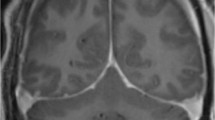Opinion statement
Spontaneous intracranial hypotension (SIH) is a syndrome that was largely unknown until the advent of MRI. The incidence of SIH is estimated at 5 per 100,000, which is half the incidence of subarachnoid hemorrhage. The major feature is a postural headache of acute or subacute onset. This headache is absent or minimal when the patient is lying down and rapidly worsens to great intensity when the patient sits or stands. Other features may include nausea, vomiting, vertigo, tinnitus, and marked exacerbation by Valsalva maneuver. SIH is due to a leak of cerebrospinal fluid from a tear in the dural membrane, which occurs most often at the exit zones where the cervical spinal roots leave the subarachnoid space. Other leak sites may be the vestibular system, the cribriform plate, or the pituitary fossa. If the leak continues, the brain loses buoyancy within the cranial space and sags toward the foramen magnum. This, in turn, may produce subdural hygroma or hematoma, brainstem compression, focal cranial nerve palsies, or cerebellar tonsillar herniation. The initial therapy is generally strict bed rest. If this fails, an epidural blood patch is usually successful in sealing the leak and restoring brain buoyancy. A significant minority of patients require a repeat epidural blood patch. If the blood patch fails, a surgical approach may be needed. Repair of the leak and restoration of brain buoyancy will stop the postural headache and, in most cases, will reverse the complications.
Similar content being viewed by others
References and Recommended Reading
Schievink WI: Spontaneous spinal cerebrospinal fluid leaks and intracranial hypotension. JAMA 2006, 295:2286–2296.
Mokri B, Piepgras DG, Miller GM: Syndrome of orthostatic headaches and diffuse pachymeningeal gadolinium enhancement. Mayo Clin Proc 1997, 72:400–413.
Schievink WI, Maya MM, Riedlinger M: Recurrent spontaneous spinal cerebrospinal fluid leaks and intracranial hypotension: a prospective study. J Neurosurg 2003, 99:840–842.
Nosik WA: Intracranial hypotension secondary to lumbar nerve sleeve tear. JAMA 1955, 157:1110–1111.
Chung S, Kim J, Lee M: Syndrome of cerebral spinal fluid hypovolemia. Clinical and imaging features and outcome. Neurology 2000, 55:1321–1327.
Chung SJ, Lee JH, Im JH, Lee MC: Short-and long-term outcomes of spontaneous CSF hypovolemia. Eur Neurol 2005, 54:63–67.
Schwedt T, Dodick D: Spontaneous intracranial hypotension. Curr Pain Headache Rep 2007, 11:56–61.
Walker DG: Refractory headache due to spontaneous intracranial hypotension from a CSF leak at C1-2. J Clin Neurosci 2003, 10:482–485.
Suh SI, Koh SB, Choi EJ, et al.: Intracranial hypotension induced by cervical spine chiropractic manipulation. Spine 2005, 30:E340–E342.
Sato Y, Honda Y, Maruoka H, et al.: Recurrence of spontaneous intracranial hypotension with subdural hematomas. Cephalalgia 1997, 17:42–45.
Noronha RJ, Sharrack B, Hadjivassiliou M, Romanowski CAJ: Subdural haematoma: a potentially serious consequence of spontaneous intracranial hypotension. J Neurol Neurosurg Psychiatry 2003, 74:752–755.
Whiteley W, Al-Shahi R, Lueck CJ: Spontaneous intracranial hypotension causing confusion and coma: a headache for the neurologist and the neurosurgeon. Brit J Neurosurg 2003, 17:456–458.
Watanabe A, Horikoshi T, Uchida M, et al.: Subdural effusions in the posterior fossa associated with spontaneous intracranial hypotension. Can J Neurol Sci 2006, 33:205–208.
Schievink WI, Maya MM, Moser FG, Tourje J: Spectrum of subdural fluid collections in spontaneous intracranial hypotension. J Neurosurg 2005, 103:608–613.
Mokri B, Maher C, Sencakova D: Spontaneous CSF leaks: underlying disorder of connective tissue. Neurology 2002, 58:814–816.
Schievink WI, Gordon OK, Tourje J: Connective tissue disorder with spontaneous spinal cerebrospinal fluid leaks and intracranial hypotension: a prospective study. Neurosurgery 2004, 54:65–70.
Yousry I, Förderreuther S, Bernhard M, et al.: Cervical imaging in postural headache: MR signs and pathophysiological implications. Am J Neuroradiol 2001, 22:1239–1250.
Pakiam A, Lee C, Lang AE: Intracranial hypotension with parkinsonism, ataxia and bulbar weakness. Arch Neurol 1999, 56:869–872.
Beck CE, Rizk NW, Kiger LT, et al.: Intracranial hypotension presenting with severe encephalopathy. Case report. J Neurosurg 1998, 89:470–473.
Kashmere JL, Jacka MJ, Emery D, Gross DW: Reversible coma: a rare presentation of spontaneous intracranial hypotension. Can J Neurol Sci 2004, 31:565–568.
Alvarez-Linera J, Escribano J, Benito-Leon J, et al.: Pituitary enlargement in patients with intracranial hypotension syndrome. Neurology 2000, 55:1895–1897.
Mokri B, Posner J: Spontaneous intracranial hypotension: the broadening clinical and imaging spectrum of CSF leaks. Neurology 2000, 55:1771–1772.
Albayram S, Wasserman B, Yousem DM, Wityk R: Intracranial hypotension as a cause of radiculopathy from cervical epidural venous engorgement: case report. Am J Neuroradiol 2002, 23:618–621.
Mea E, Savoiardo M, Chiapparini L, et al.: Headache and spontaneous low cerebrospinal fluid pressure syndrome. Neurol Sci 2007, 28(Suppl 2):232–234.
O’Carroll CP, Zawadzki MB: The syndrome of spontaneous intracranial hypotension. Cephalalgia 1999, 19:80–87.
Headache Classification Subcommittee of the International Headache Society: The International Classification of Headache Disorders: 2nd edition. Cephalalgia 2004, 24(Suppl 1):9–160.
Schievink W, Maya M, Louy C: Cranial MRI predicts out-come of spontaneous intracranial hypotension. Neurology 2005, 64:1282–1284.
Schoffer KL, Benstead TJ, Grant I: Spontaneous intracranial hypotension in the absence of magnetic resonance imaging abnormalities. Can J Neurol Sci 2002, 29:253–257.
Messori A, Simonetti BF, Regnicolo L, et al.: Spontaneous intracranial hypotension: the value of brain measurements in diagnosis by MRI. Neuroradiology 2001, 43:453–461.
Tsai PH, Wang SJ, Lirng JF, Fuh JL: Spontaneous intracranial hypotension presenting as mental deterioration. Headache 2005, 45:76–80.
Mikawa S, Ebina T: Spontaneous intracranial hypotension complicating subdural hematoma: unilateral oculomotor nerve palsy caused by epidural blood patch. Neurol Surg 2001, 29:747–753.
Schievink W, Maya M, Chow W, Louy C: Reversible cerebral vasoconstriction in spontaneous intracranial hypotension. Headache 2007, 47:284–287.
Berroir S, Loisel B, Ducros A, et al.: Early epidural blood patch in spontaneous intracranial hypotension. Neurology 2004, 1950–1951.
Kantor D, Silberstein S: Cervical epidural blood patch for low CSF pressure headache. Neurology 2005, 65:1138.
Author information
Authors and Affiliations
Corresponding author
Rights and permissions
About this article
Cite this article
Couch, J.R. Spontaneous intracranial hypotension: The syndrome and its complications. Curr Treat Options Neurol 10, 3–11 (2008). https://doi.org/10.1007/s11940-008-0001-5
Published:
Issue Date:
DOI: https://doi.org/10.1007/s11940-008-0001-5




